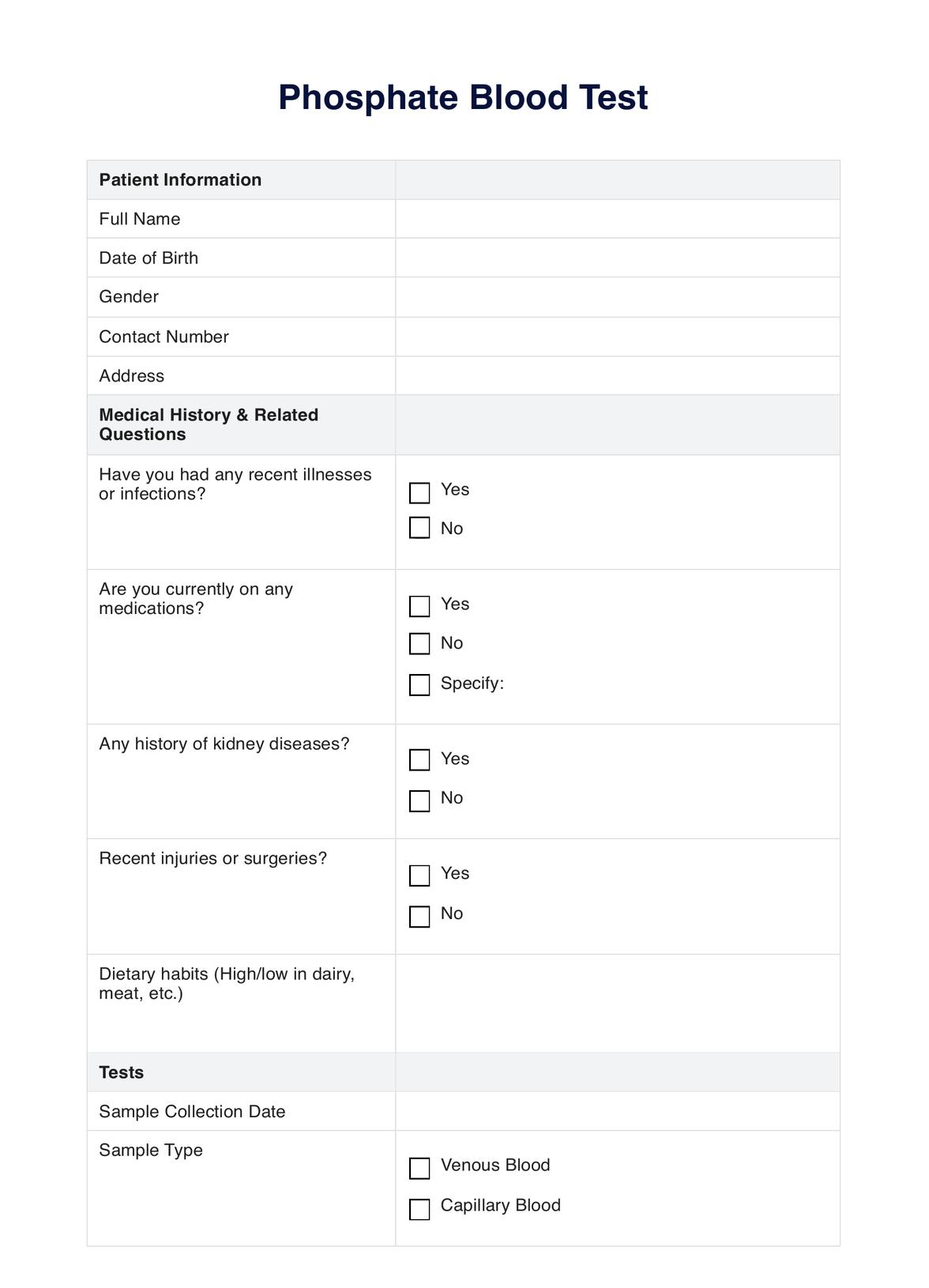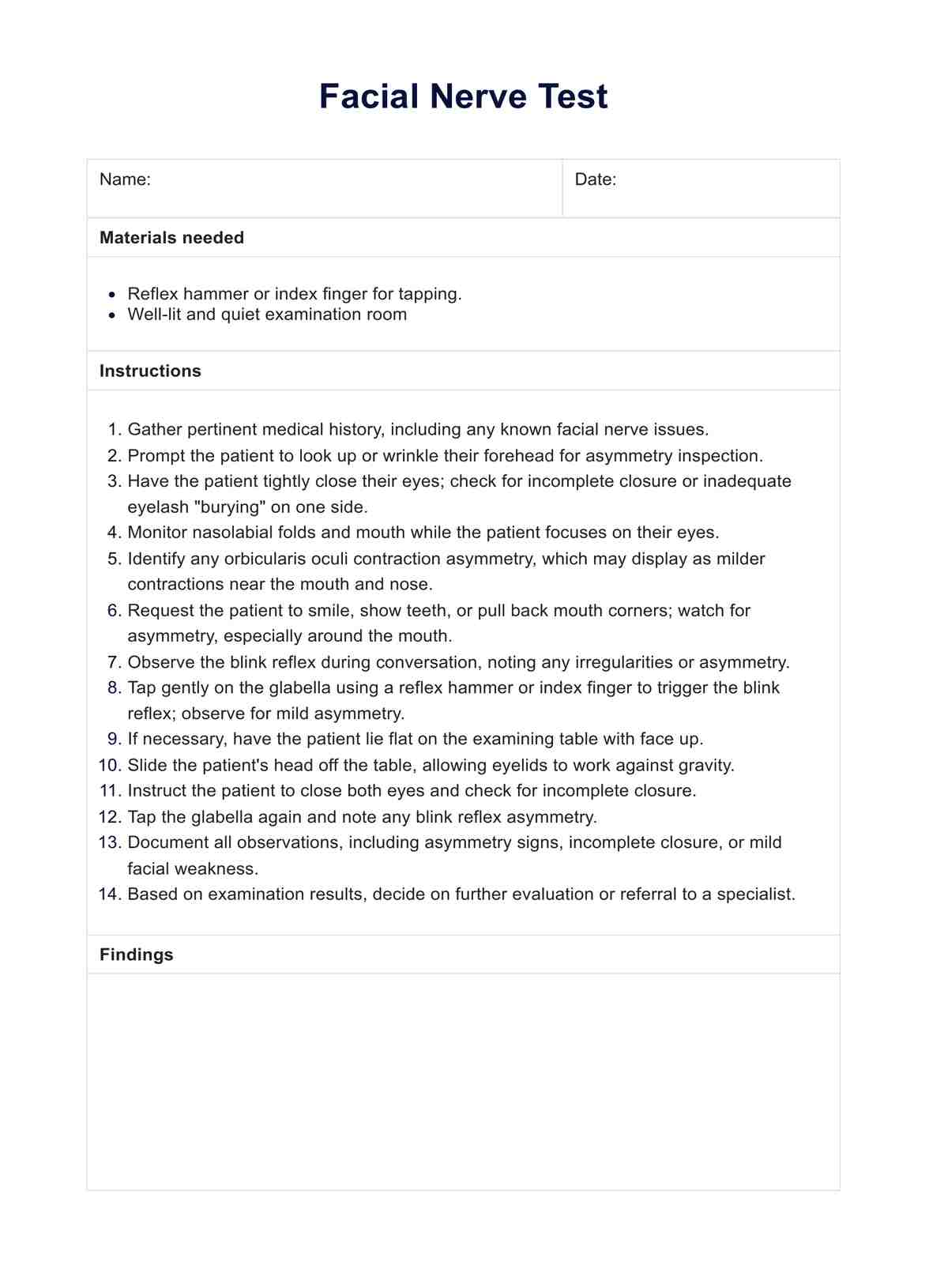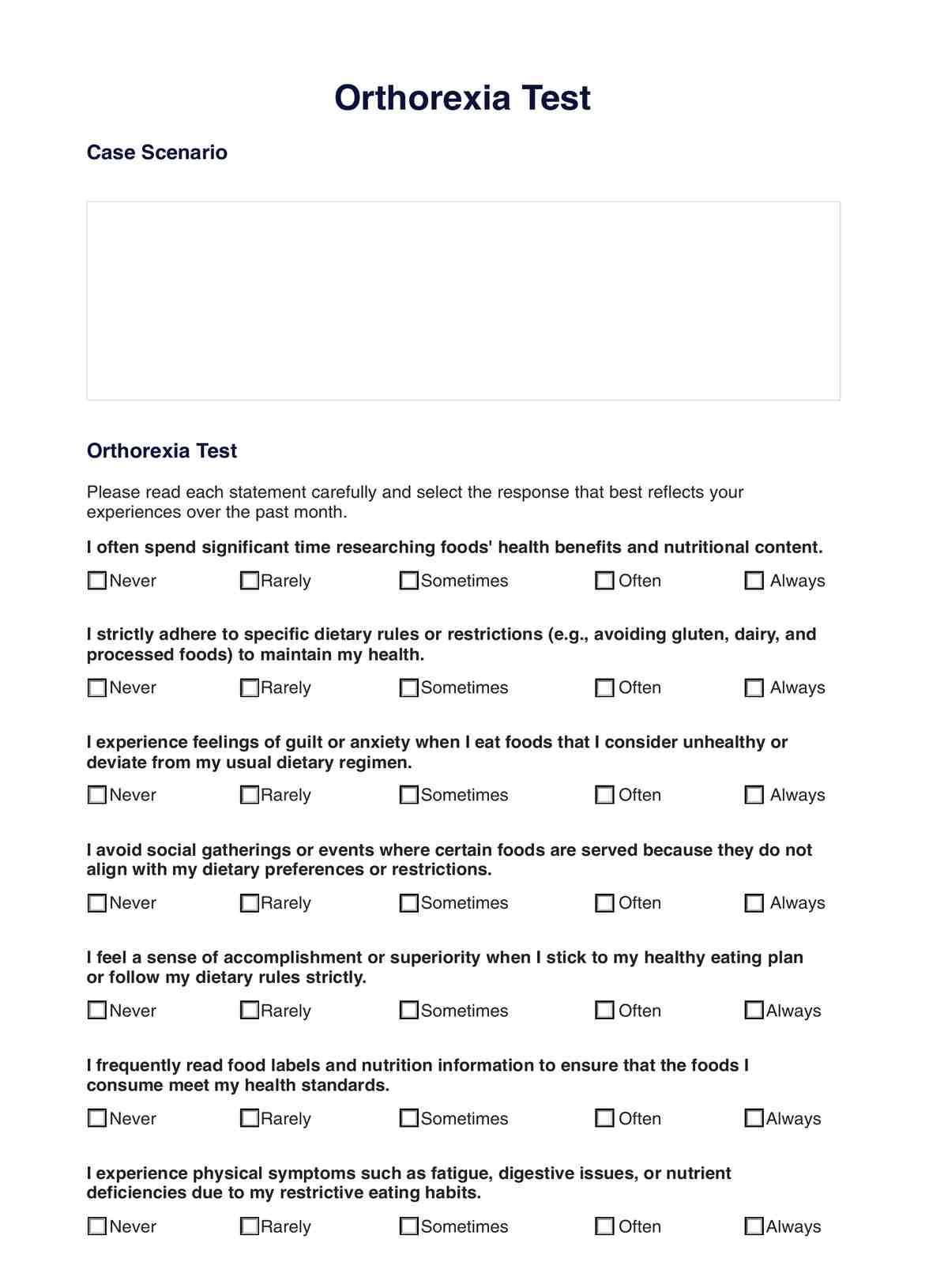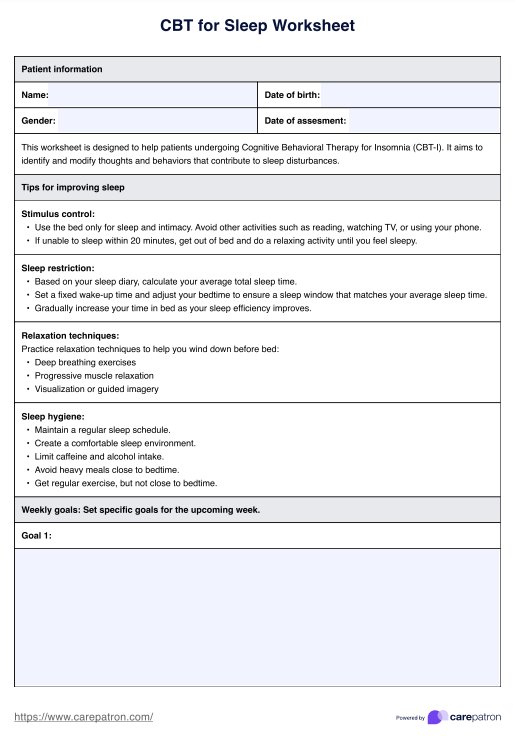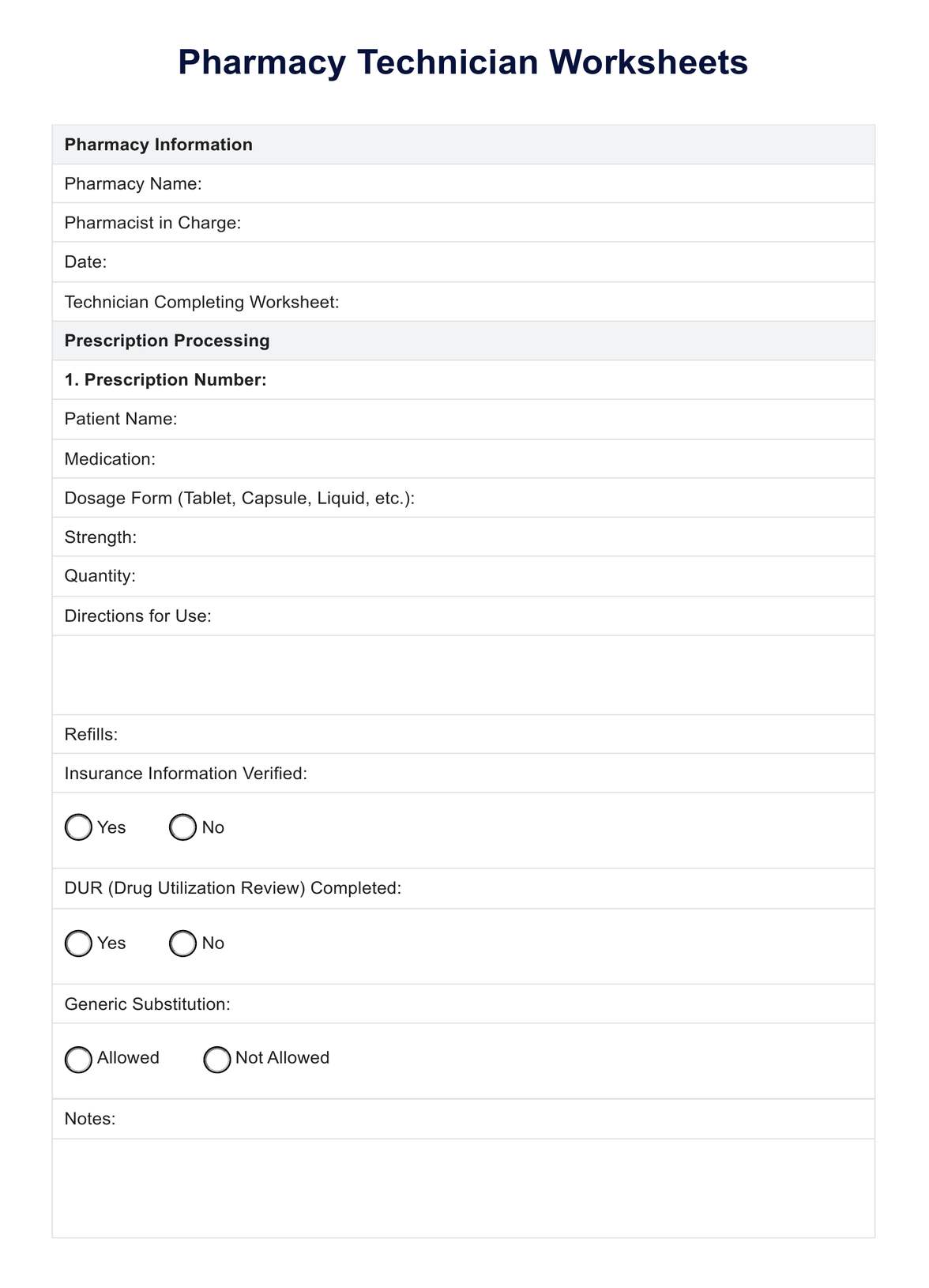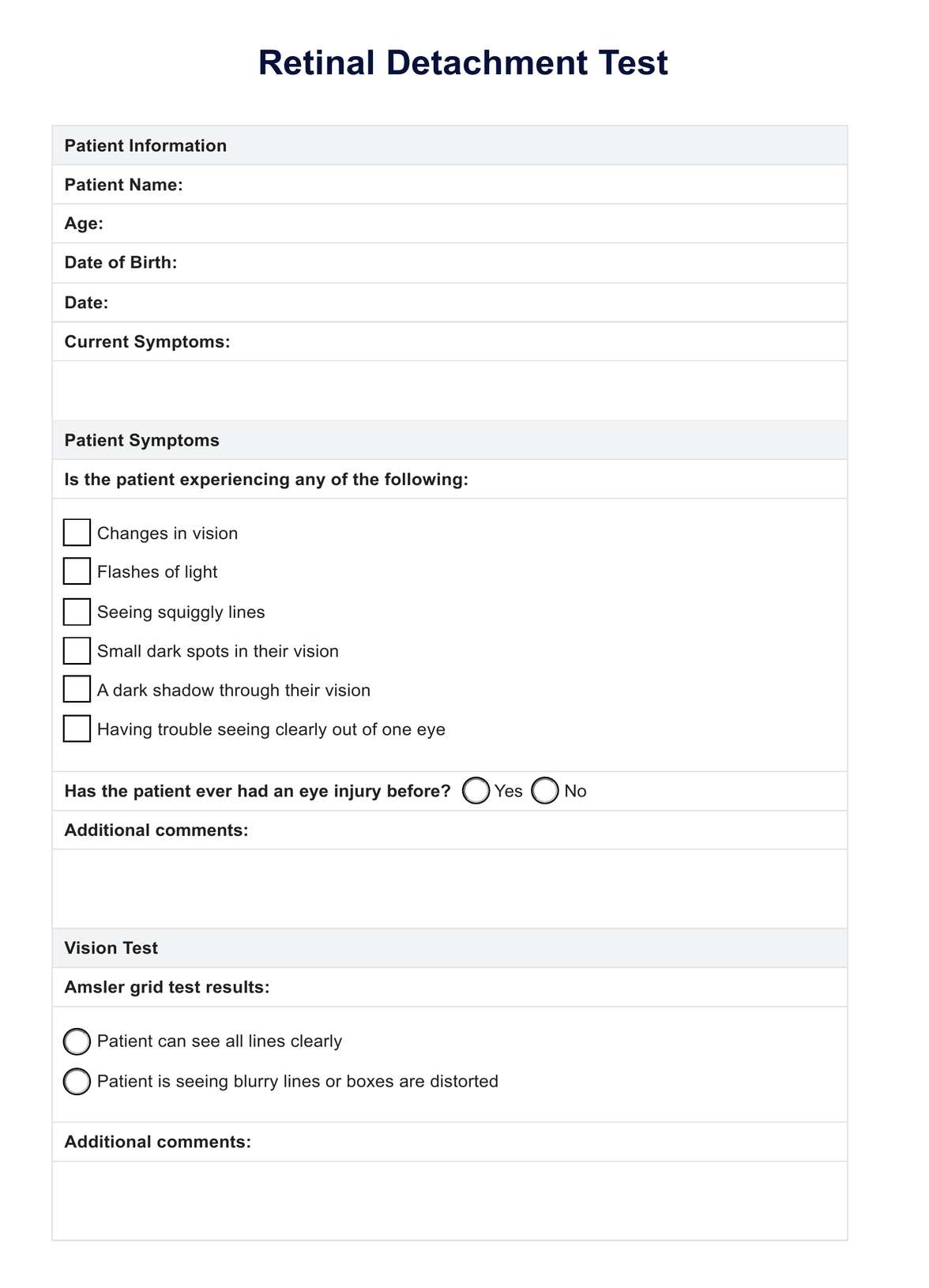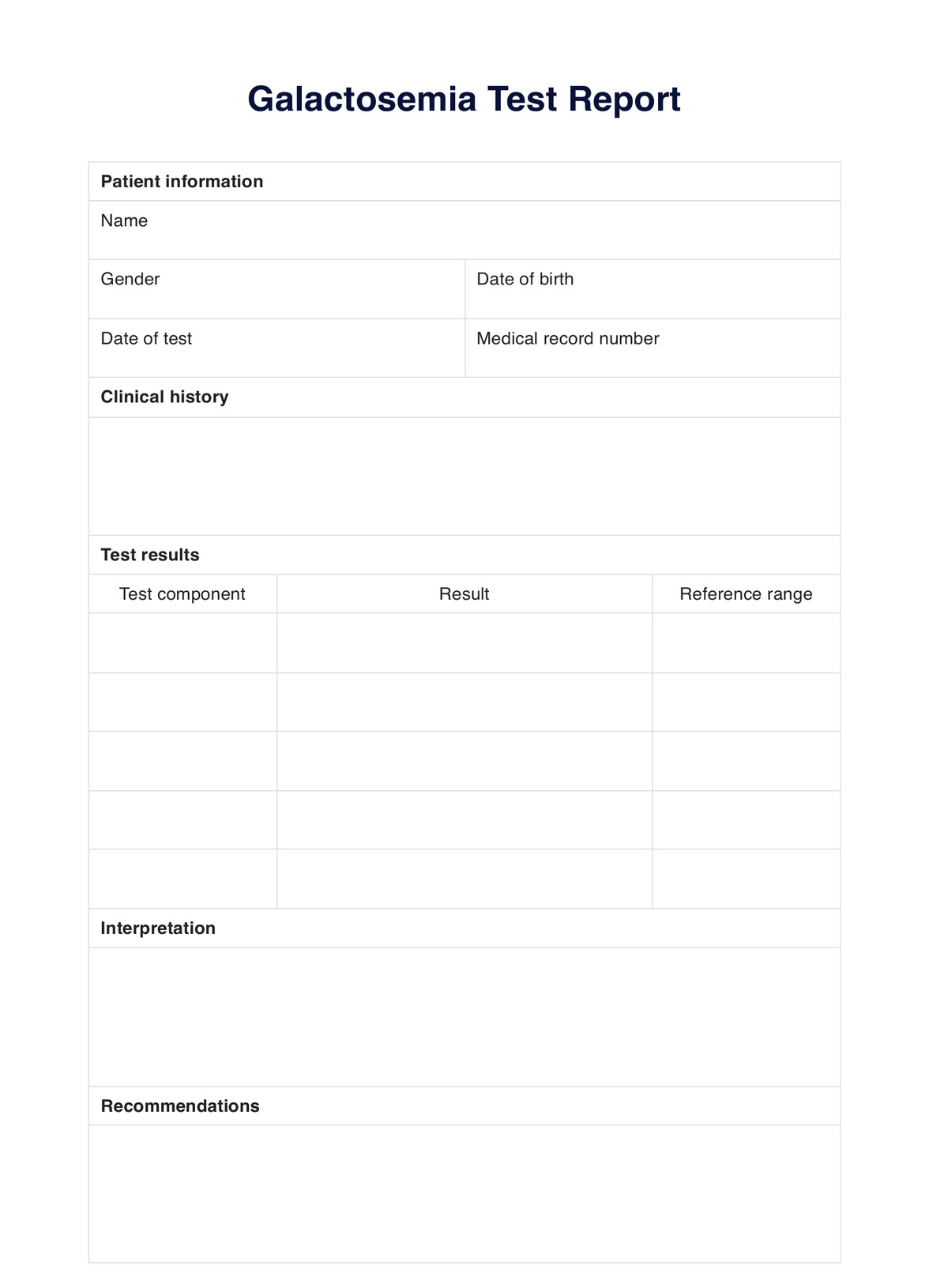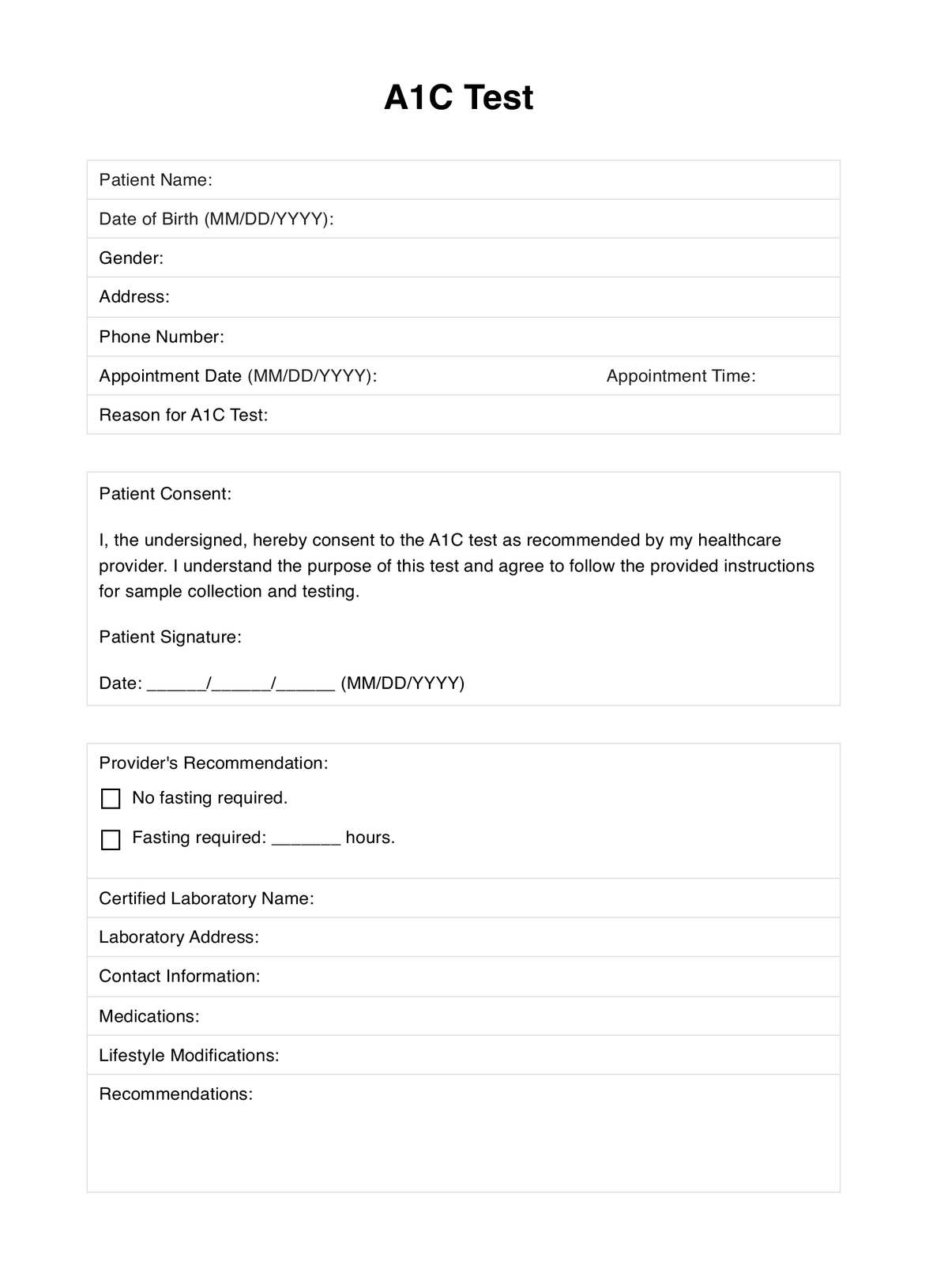Apley's Test
Learn how the Apley's Test works. Get access to a free template for streamlined clinical documentation.


What is an Apley's Test?
Apley’s Test, also known as the Apley grind test or Apley compression test, is a clinical assessment used to evaluate potential meniscal injuries in the knee joint. This test helps differentiate between injuries to the medial and lateral meniscus and ligamentous structures, particularly the anterior cruciate ligament (ACL). It is commonly performed when a patient presents with knee pain, clicking, or locking sensations, which may indicate a torn meniscus.
The test is conducted with the patient lying prone and the knee flexed to 90 degrees. The examiner stabilizes the patient's thigh against the examination table and applies two different forces to the tibia: distraction and compression. During the distraction phase, the tibia is pulled upward while being rotated medially and laterally to assess ligamentous structures. In the compression phase, a downward force is applied to the tibia while rotating it, which increases pressure on the meniscus. If the patient experiences pain or restricted movement during compression, it suggests a meniscus injury. Pain occurring primarily during distraction may indicate ligamentous involvement, such as an anterior cruciate ligament injury.
A positive Apley grind test with pain or restricted motion upon compression suggests a medial or lateral meniscus injury, often due to excessive twisting or direct trauma to the knee. A negative test occurs when no pain or abnormal movement is observed, indicating an intact meniscus and ligamentous structures (Magee, 2014). This test is often used alongside other clinical assessments, such as the McMurray test and MRI imaging, to confirm a torn meniscus or other knee pathology.
Have a look at this video to see how to perform the Apley's Test
Apley's Test Template
Apley's Test Example
How does our Apley's Test template work
Carepatron has created a free Apley test template to simplify clinical documentation. Follow these steps to get started:
Step 1: Download the form
Click the "Use template" button to access the Apley’s Test template via the Carepatron app, where you can edit and store it digitally. If you prefer a printable format, select "Download" to obtain a PDF version.
Step 2: Perform the Apley’s Test
Follow the step-by-step instructions provided in the template to conduct the Apley compression test and Apley distraction test while the patient is in a prone position.
Step 3: Record results
Use the template to document your patient’s test results and any additional notes regarding their knee assessment. Selecting the appropriate outcome ensures accurate clinical documentation and guides further evaluation.
Step 4: Save and share
Once completed, save the form securely in Carepatron, share it with colleagues, or integrate it into electronic health records (EHRs) for future reference.
When to use an Apley's assessment
The Apley's Test is commonly performed when a patient presents with symptoms such as locking, clicking, joint line tenderness, or instability in the knee.
Suspected meniscus injuries
Apley’s assessment is most frequently used to evaluate meniscal injuries, particularly in individuals with a history of twisting injuries or repetitive stress on the knee. The test helps identify degenerative meniscal tears in older adults and acute meniscus damage in younger, active individuals. If the test shows decreased rotation relative to the unaffected knee with pain during compression, it strongly suggests a medial or lateral meniscus injury.
Assessing ligamentous injuries
While primarily a test for meniscal injuries, Apley’s assessment can also provide insights into ligamentous damage, particularly involving the medial collateral ligament and posterior cruciate ligament. If the test shows increased rotation relative to the normal side with pain during distraction, it suggests ligamentous instability rather than a meniscus injury.
Post-surgical or chronic knee pain evaluation
Apley’s assessment can be included in a clinical examination of patients with persistent knee pain following previous injuries or surgeries. It helps assess medial inferior genicular artery involvement, which supplies blood to the meniscus and can indicate whether degenerative meniscal tears have progressed.
Routine physical examination in sports medicine
Athletes often undergo Apley’s testing during physical examination following knee trauma to rule out serious structural damage. The test is particularly useful when the patient is in a prone position, allowing for clear differentiation between ligamentous and meniscal injuries based on pain response to compression and distraction.
Benefits of using our free Apley's Test template
Using our free template comes with several benefits for you and your patients. Here are some of the key advantages:
Fully digital
Our Apley’s Test template is fully digital, allowing you to document assessments quickly and store them securely. Digital records streamline clinical documentation, making it easier to track patient progress over time.
Standardized assessment
The template provides a structured approach to evaluating meniscal lesions, ensuring that all key aspects of the test are documented accurately. By using this tool, you can differentiate between ligamentous injuries and meniscal damage, particularly when assessing pain and mechanical complaints in the knee.
Efficient evaluation
The Apley’s Test is particularly useful for assessing lateral knee pain, especially when symptoms suggest the involvement of the lateral inferior genicular artery, which supplies blood to the meniscus. Proper documentation helps guide decisions regarding further imaging or orthopedic referral.
Improved accuracy
By using a structured template, you can ensure consistent and detailed documentation of symptoms, test results, and interpretations. This improves diagnostic accuracy when assessing pain and mechanical complaints, helping to determine whether a patient’s discomfort is due to a meniscal lesion or another underlying issue.
Easy sharing and collaboration
The digital format allows for seamless sharing and collaboration with other healthcare providers. Whether you need to consult a specialist or refer a patient for further evaluation, having a clear, well-documented Apley’s Test result enhances communication and supports better patient outcomes.
Reference
Magee, D. J. (2014). Orthopedic physical assessment. (6th ed.). Elsevier Saunders.
Commonly asked questions
The Apley’s Test is used to assess meniscal injuries and differentiate them from ligamentous injuries in the knee joint. It helps determine whether a patient’s knee pain and mechanical complaints are due to a meniscal lesion or ligament damage. This test is often performed when a patient experiences locking, clicking, or restricted movement in the knee.
The Apley’s Test measures pain response, joint mobility, and rotational restrictions in the knee to evaluate potential meniscus injuries or ligamentous instability. If pain occurs during compression, it suggests a meniscal lesion, whereas pain during distraction indicates possible ligamentous involvement.
To perform the Apley grind test, the patient should be positioned in a prone position with their knee flexed to 90 degrees. Stabilize the posterior thigh against the table, then apply downward compression to the tibia while rotating it medially and laterally to assess the meniscus. Repeat the movement with distraction by pulling the tibia upward to evaluate ligamentous structures, noting any pain or restricted motion.


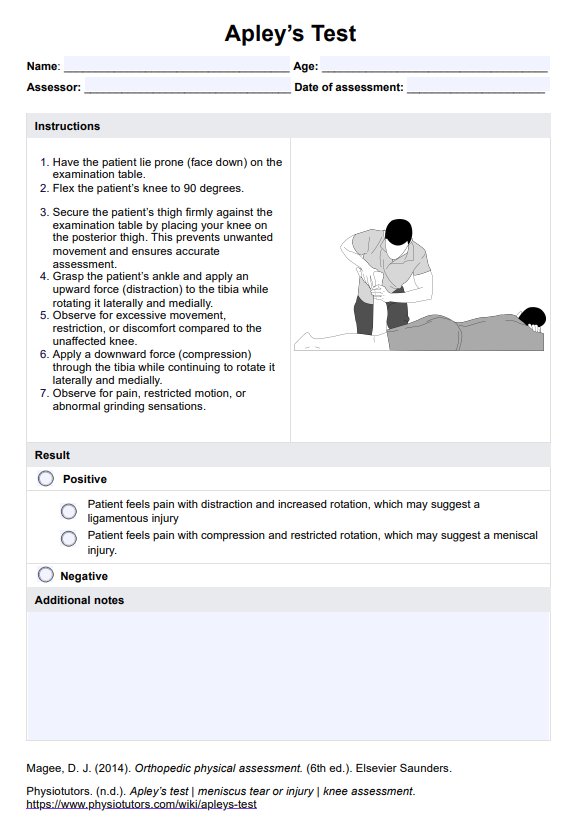
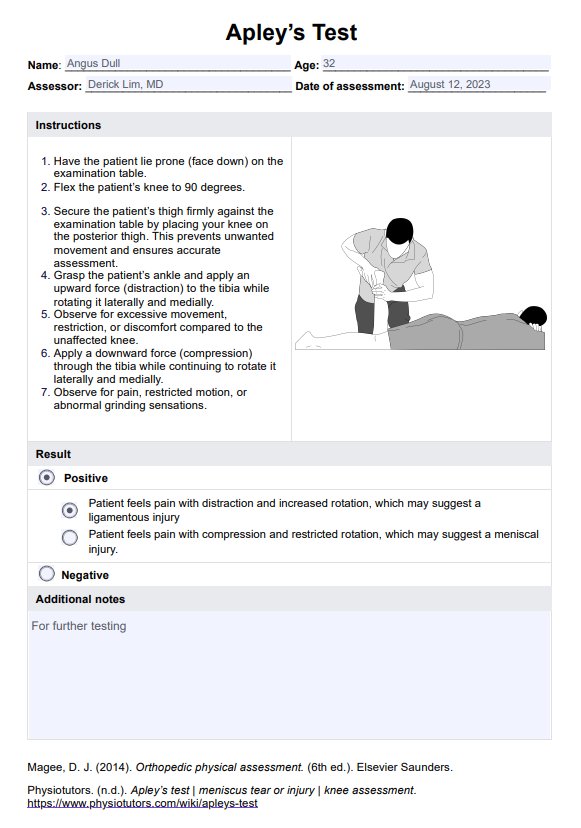

















-template.jpg)


















































































